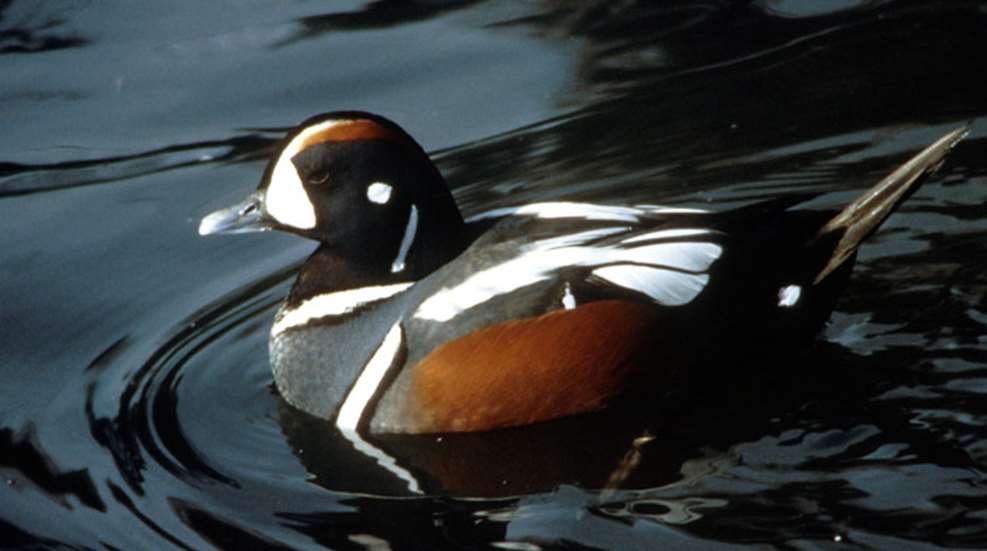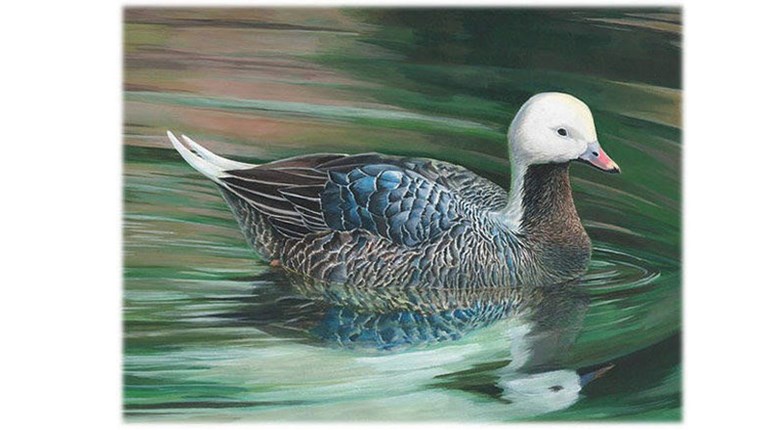
Bright and colorful, the harlequin duck’s flamboyant and vivid plumage distinguishes it from other ducks. The plumage of the male harlequin, or drake, has a splashy pattern that resembles the costumes of medieval court jesters—which is how the harlequin got its name. Bold black and white bands around the neck stand out against slate-blue and chestnut, and the white spots above the eyes contribute to the harlequin’s striking features. The female harlequin, or hen, is adorned with more subtle brown feathers but still sports a white spot above each of her eyes.
A sea duck the size of a pigeon, the harlequin dives for its food in turbulent streams and rivers. The ducks enjoy dining on the larvae of aquatic insects and small mollusks like snails and periwinkles. The harlequin is a fast flyer, known for low straight flight across the water.
The harlequin inhabits two separate areas of North America, the East and the West coastlines. The migration of the harlequin has been compared to that of salmon, because both the harlequin and salmon follow rivers and streams back to their breeding grounds. Though the harlequin is scarce, its markings are so distinctive it would be difficult to miss.
FAST FACTS
- Harlequin ducks are hunted under restricted regulations in the West, but hunting is prohibited in eastern North America.
- “Lords and Ladies” is a local name for the harlequin duck.
- The harlequin’s Latin name is “Histrionicus,” which means “stage player.”






































